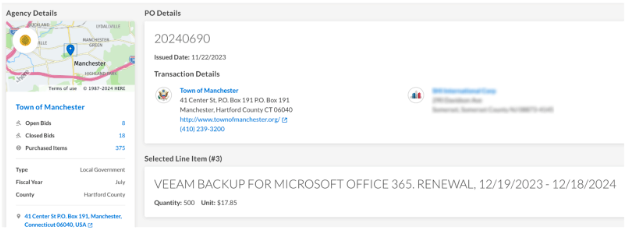
I know what you’re thinking:
Another post about AI and how it’s game-changing and if you’re not using it all day every day for everything you do, you’re miles behind the competition.
Well, that might be half true. It’s genuinely game-changing technology, and if you’re not incorporating it into your business, you’re likely at a disadvantage. BUT, and this is a very big “but,” the right application of AI is far more impactful than whether you’re using it at all. Applied incorrectly, or even just inelegantly, AI can actually do more harm than good, or at the very least just waste a bunch of your time.
Generative AI, which is all the rage now, is very good at answering questions and telling you things. It’s also very good at making stuff up, and it often doesn’t know the difference. That makes it risky to rely upon alone, and puts the fact-checking onus back on you.
There’s also a lot of stuff these Generative AI models just don’t know. For example, you could ask ChatGPT:

“That’s not very helpful… I thought AI knew this stuff?”
A Generative AI model is only as good as the data it’s trained on, and in this case, even the most powerful AI assistant just doesn’t have the data to answer what would be a very valuable question for someone interested in selling software to the Town of Manchester.
At GovSpend, we have the public sector intelligence to answer that question. We can also tell you how many licenses they bought, AND how much they charged.

“Great, but I need to create an opportunity list quickly, where does AI come in?”
Searching for this data agency by agency isn’t a great use of your time. At GovSpend, we continuously receive purchase order data with line-item detail from over 30K state and local agencies and public school systems. Unfortunately, (unlike the federal space) there’s no universal system employed by SLED Agencies to categorize purchases by “software licensing,” or “office supplies,” which makes it difficult to cut through the noise and create a list of relevant opportunities.
One of the AI tools we’re building, and expect to have for customers in beta this spring, does just that: categorizes over 1B purchase order line items so you can distill search results down into an actionable list of relevant opportunities in seconds.
This upcoming enhancement perfectly embodies GovSpend’s approach to building AI-powered products that deliver deeper public sector intelligence. By applying this incredibly powerful technology to an otherwise unstandardized dataset, we can create something uniquely valuable for our customers.
You’ll also see this approach come to life with Agency Meeting Summaries, also coming this Spring. By interrogating hours of meeting transcripts with prompts that have been finely tuned for government contracting use cases, we can distill these meetings down to relevant, actionable bullet points that highlight the things you care about: purchasing decisions, budget discussions, and RFP planning and review.
We’ll also be summarizing SLED and Federal opportunities and RFPs (documents included), allowing users to search across them semantically in addition to the current keyword-based lexical search.
And, most importantly, we’re applying these AI models consistently across our datasets so our customers can start to understand the story around a purchase. While reading a meeting transcript where a city council is discussing a new contract opportunity, you can surface pricing data from their previous purchases. Or as you review an RFP that we just delivered to your inbox, you can refer back to the budget committee meeting where this RFP was first discussed.
The potential to leverage AI for public sector intelligence is vast, but application and execution matter.
Technology and data have always been at the core of how we serve customers, and we have an incredible foundation on which to build the next generation of tools to help you outperform in the public sector marketplace. AI is a major part of that strategy, and when combined with our unique, differentiated datasets, and the right technologists to deliver the right solutions for our customers, 2024 is shaping up to be a very exciting year ahead!



